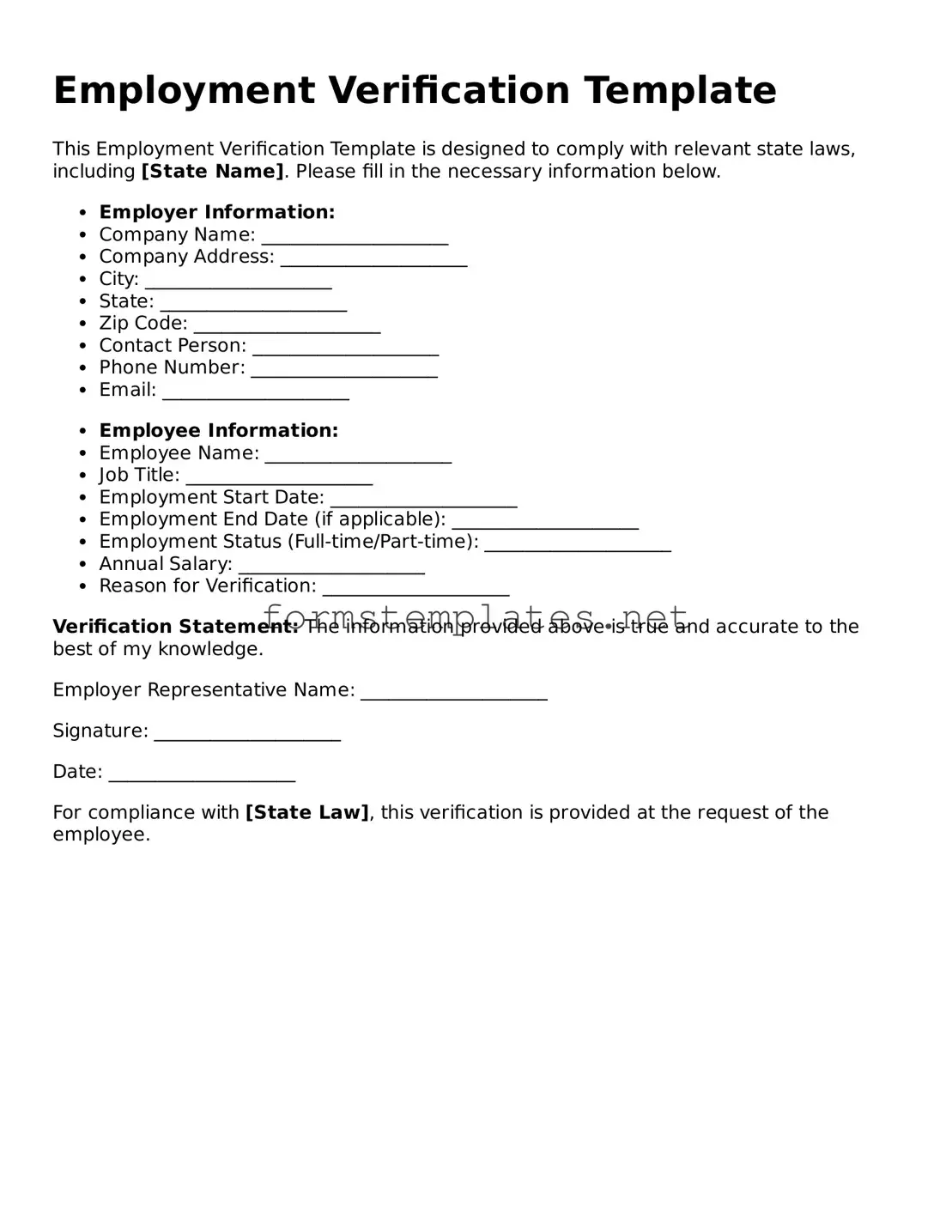Employment Verification Template
This Employment Verification Template is designed to comply with relevant state laws, including [State Name]. Please fill in the necessary information below.
- Employer Information:
- Company Name: ____________________
- Company Address: ____________________
- City: ____________________
- State: ____________________
- Zip Code: ____________________
- Contact Person: ____________________
- Phone Number: ____________________
- Email: ____________________
- Employee Information:
- Employee Name: ____________________
- Job Title: ____________________
- Employment Start Date: ____________________
- Employment End Date (if applicable): ____________________
- Employment Status (Full-time/Part-time): ____________________
- Annual Salary: ____________________
- Reason for Verification: ____________________
Verification Statement: The information provided above is true and accurate to the best of my knowledge.
Employer Representative Name: ____________________
Signature: ____________________
Date: ____________________
For compliance with [State Law], this verification is provided at the request of the employee.
